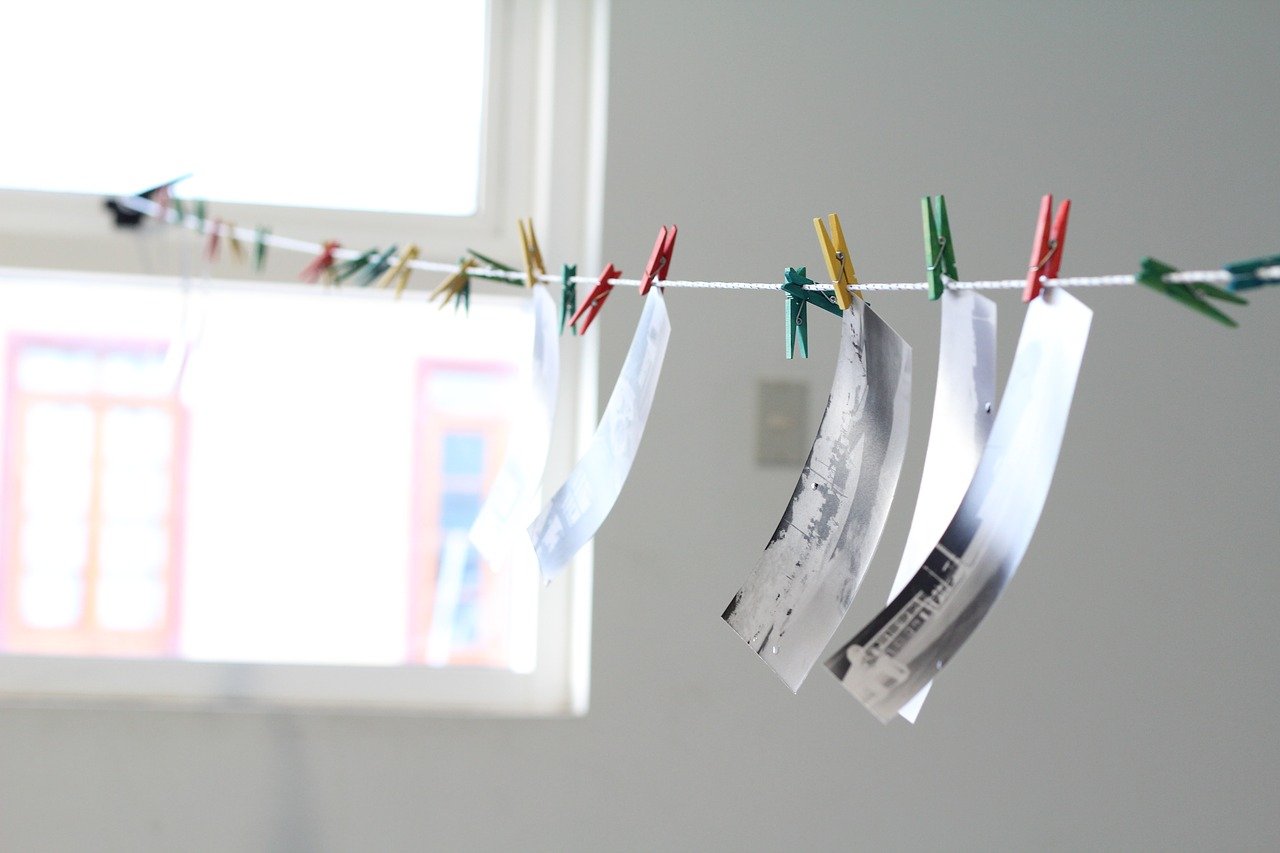Step 1
Pierce the aluminium foil in the middle using a needle
Step 2
Paint the inside and outside of the box black using the paint and brush.
Step 3
Use the craft knife to cut a square the size of the aluminium sheet at the bottom of the box.
Step 4
Using electrical tape, stick the aluminium sheet over the newly cut square from the inside of the box.
Step 5
From the outside of the box, cover the edges of the cut square. Attach a small piece of paper over the hole.
Step 6
Tape the photosensitive film to the underside of the box lid and put the two parts of the box together.
Step 7
Carefully put the assembly camera on a steady platform in front of a well-lit scene and remove the paper cover for about 30 seconds to 4 minutes.
Step 8
Optional: Get the photo developed at a photography shop.
A safety pin can be used instead of a needle
The box does not have to be a shoebox, it just has to be a closable box.
The simplest way to study light is to think of shadows as, usually, one cannot be found without the other. Shadows form when an object blocks the light and thus it can be said that shadows are areas that lack light. Light is composed of rays which are only capable of travelling along a straight line. Thus when something or someone blocks these light rays shadows form. However light being a form of energy, it does not simply disappear when it encounters an obstacle that blocks it, the object either absorbs the rays or reflects it back (in some cases the two phenomena may occur to different degrees).
In a pinhole camera, the opposite of shadow casting is occurring. Since the interior of the box was completely painted black the only source of light is through the hole in the aluminium. Light is allowed to enter the camera without obstruction and it lands on the photosensitive film. This light reacts with the surface of the film creating an image.
The marks on the film occur because objects emit and reflect light to different degrees. The stronger the light emitted the stronger the reaction upon the film and thus the darker the colouration produced. The weaker the light emitted the weaker the reaction observed upon the film and thus the fainter the colour observed. It is because of these differences in reaction strength that image outlines and shading can be observed.
Why is the box painted black?
To ensure no unwanted light enters the box.
Why is the film attached in the dark?
The film is photosensitive and would react in the presence of light
Why is the hole of the aluminium covered?
To prevent unwanted light from entering the box and hitting the film.
Why is aluminium used to make the pinhole?
Aluminium is reflective and thus sends light back towards the film.
Does the amount of length of time the camera is open make a difference to the photo?
Yes, the longer the camera is left to take the picture the clearer and more detailed the picture taken.
One of the fundamental laws of physics is that energy cannot be created or destroyed; it can only change its form. Light is a form of energy and thus follows this rule. Light energy can be converted to a number of different energy forms but in this case, it is being converted specifically to chemical energy. When the light rays come in contact with the photosensitive surface of the film it reacts via a series of chemical reactions to form an image upon the film’s surface.
The structure of the camera produced is also important to take note of. The aluminium pinhole functions as the lens of this camera and thus causes the image produced to be inverted as well as forces each ray being emitted to form a small point upon the film. It is due to these points as well as the aluminium lens that allows the image to be produced in focus.
Light rays:
Light rays form part of the visible region of the electromagnetic spectrum and are thus capable of travelling through a vacuum a.k.a are possible of transferring energy without the use of a medium. Such EM waves are produced through the vibration of electrical charges and are composed of both electrical and magnetic components (hence their name). Such EM waves can be found in a large spectrum of frequencies, however for the sake of the experiment above only the visible light region is being studied. This region is comparatively narrow when compared to the overall EM spectrum and is situated between the IR region and the UV region. This region is known as the visible region as it is the only region visible to the human eye,
The different wavelengths within the visible spectrum produce specific colours. It is because of this that when white light strikes a prism it separates into the whole visible spectrum. Blue/ Purple colours have a smaller wavelength and thus a higher energy while red colours have a larger wavelength and thus less energy. Light rays move in straight lines, although the direction can be changed through reflection (bouncing off a surface) or refraction (moving through an object with a different density.
Lens:
Light by nature is capable of travelling along a straight path unless obstructed by an external object. Light divergence and convergence is only possible in the presence of a lens. Lens are transparents pieces of glass or plastic with one or numerous surfaces being curved. Lens make use of light refraction to function, thus allowing light to bend as it passes through the medium, and thus triggering a change in direction. Lens produce the illusion that rays originate from a point closer or further away from their actual origin. It is because of this that the images produced are generally larger or smaller than the actual object depending on the type of lens it passes through.
There are two main types of lenses:
Convex lens: These usually possess a surface that bulges outwards. Due to this, such lenses are capable of causing parallel light rays to converge upon passes through the medium. In such cases the light converges at a point just beyond the focal point. Such lenses are used in telescopes.
Concave lens: These possess a surface that usually curves inwards and thus causes parallel light rays to diverge. Such lenses are utilised in tv and theater projectors.
Photosensitive film:
The photosensitive film used in such experiments possesses a layer of gelatin emulsion upon one of the surfaces. This emulsion contains microscopic silver halide crystals that are light sensitive. The size of these crystals determines the sensitivity, contrast and resolution of the image produced by the film. Upon exposure to light a photochemical reaction would occur. This reaction was dependent on the type of photosensitive chemical being used but generally involved photon absorption to produce metallic silver. This metallic silver blocks further light from reaching the film and thus appears black on the negative film.
In coloured photography the film actually possesses distinct layers that incorporate different combinations of sensitizing dyes to produce actual colour. Generally speaking the upper level is sensitive to blue light and yellow light to prevent the remaining blue light from affecting the lower layer. The middle layer is green-blue sensitive while the innermost layer is red and blue sensitive to thus produce green and red images respectively.
Applications
Photography has evolved from the primitive pinhole cameras of the past. SLR cameras are the current epitome of high definition photography:
http://www.phogulum.com/guides-stuff/how-does-single-lens-reflex-slr-camera-work/
Research
The combination of state of the art cameras and the modern telescope has brought forth a new branch of research in the form of Astrophotography. Expanding past visible light the invisible side of the universe has finally been brought to light:
http://www.popphoto.com/how-to/2008/12/how-to-astrophotography-101
Use different light sources- white, red, blue, yellow.
Attack a lense to the inside of box between the pinhole and the film.
Coat the inside of the box with foil.



